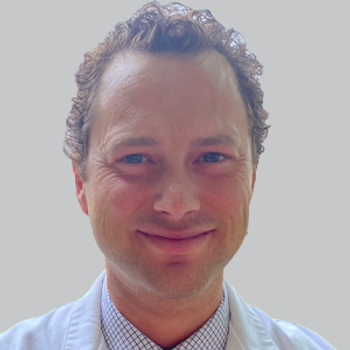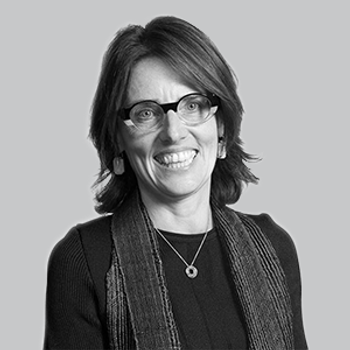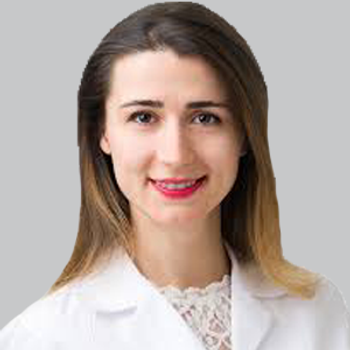
NeuroVoices: Carol Abraham, on Awareness, Advocacy, and Life With LGMD
The president of the LGMD Foundation discussed raising awareness, strengthening advocacy, and the lived experience of navigating limb-girdle muscular dystrophy.
Limb Girdle Muscular Dystrophy (LGMD) refers to a group of more than 30 rare genetic neuromuscular disorders that cause progressive weakness and wasting of the muscles in the hip and shoulder areas. LGMD Awareness Day, recognized each year on September 30th, and the broader LGMD Awareness Month, were established to increase visability of this rare disease, educate clinicians and the public, and advocate for research and resources to support affected families.
This week’s NeuroVoices features a conversation with Carol Abraham, founder of the LGMD Foundation and initiator of LGMD Awareness Day, which began in 2015. Abraham, a patient living with LGMD2A/R1 Caplain 3-related, sat down to discuss a number of LGMD-related questions, including the main priorities for awareness and where research efforts should be directed towards in the coming years. In the Q&A, she discussed the mental health burden, the value of coordinated, subtype-informed care, and the need for more investment in biomarkers, natural history, and trial end points that reflect what patients value most.
NeurologyLive: How can we continue to spread the word about this disorder, and what aspects of LGMD need to be emphasized?
Carol Abraham: Well, I definitely think you can never have too much awareness about LGMD. And I think it’s important when we talk about LGMD that we include the patient experience. The more we present how it impacts an individual’s life and everyday activities, the better. It goes much further than just the clinical appearance and symptoms.
I also think that when we speak about LGMD, it’s important to bring up the diversity of the disease—there are more than 30 subtypes, and every subtype is unique, yet similar in many ways of symptoms. Each LGMD subtype is, in fact, a disease in and of itself. So, it’s not “one size fits all,” because each subtype is based on a specific gene mutation.
In terms of this disease, I think it’s important that we amplify the patient’s voice. Patients play a huge role in raising awareness and relating the disease to their specific life and stage of the disease process. I also think we must highlight the fact that currently there are no disease-modifying treatments, and obviously there’s no cure.
For me, one of the most important things is quality of life—how patients can function in day-to-day activities. In terms of awareness, outreach is important: getting into the community and providing resources. The LGMD Awareness Foundation—one of our crown jewels is our website. We call it the information hub for the LGMD community, a place people can go to find resources—patient registries and links to them, links to the various LGMD foundations driving research forward and offering resources to their communities, and basic information like where events and educational resources are. That’s really important.
When discussing LGMD, advocacy and education are vital. We need to educate the general community, and, although it’s getting better, many patients still don’t fully understand the disease process. The more we can help educate patients, the more we can improve quality of life—they can plan. For example, with teenagers, by providing education and resources, hopefully they can start looking at a career they’re able to do in adult life despite the limitations and challenges of living with LGMD. The more we educate, the better off we all are.
I also think it’s important that patients share their stories, so clinicians and researchers have a better idea of what living with LGMD is really about. Education and advocacy help improve quality of life, independence, employment, relationships, mental health—all of that is part of the process.
Talk about your experience living with LGMD and how you try to serve as a voice for the community.
I must admit, living with LGMD is challenging. As I get older, it amazes me that there’s still more weakness to come. Unfortunately, it’s a disease where you’re continually dealing with loss. Some people say it’s like a continual grieving process. I wouldn’t go quite that far. I’m thankful the progression is somewhat slow, because it’s allowed me time to adapt to changes. It’s not like one day I can do something and the next day I absolutely can’t. As the progression occurs, you must keep adapting.
But it isn’t just the physical aspect of getting weaker. It really impacts every part of your life and takes away independence. There is a huge mental-health component, I think, because you do lose that independence everyone strives for. As you become weaker, it takes resilience and strength to admit you can’t do some things on your own and you have to ask for assistance. I’m at the stage where I pretty much need assistance with all activities of daily living—bathing, dressing, eating, rolling over in bed—some of the most minor activities that people take for granted. Relying on someone else for those is challenging.
I’m one of those people who likes to look at the glass half full. I focus on what I’m able to do versus what I’m unable to do. I’m very blessed to have a wonderful, supportive, caring husband by my side through this journey, and I’m very thankful for that.
I also believe I’ve gained some strengths from LGMD. It has driven me to be very adaptive—I have strong problem-solving skills, and I think that comes from being forced to problem-solve in daily life. It’s helped me become an advocate. When I was younger, I never thought I’d be traveling to Washington, D.C., for a Day on the Hill, or speaking at conferences. It has opened so many doors for me, which I’m grateful for, and it has helped me reach out to our community.
When I was growing up, I knew no one with limb-girdle muscular dystrophy—let alone any form of muscular dystrophy. I met my first person with LGMD when I was 50. That was life changing. Now, with the internet, social media, and so many resources, one of the greatest things is that we’re able to build the LGMD community. No matter where you live, we can support each other. I’m excited and motivated about connecting people. You no longer have to think you’re the only one experiencing this. We now have a strong community to provide support to one another so we’re not alone. That has been a gift—sharing my experiences and bringing individuals together.
The LGMD community is amazing. There’s a lot of unity. All the different LGMD foundations work together, which makes our community stronger. We’re a very strong, patient-led community, and our advocacy efforts have a huge impact. We have the same goal: find a cure or treatment. It’s not a competition; we help each other. We’ve even heard from FDA and others that we’re somewhat unique because there isn’t that competition among foundations. We’re closely linked, we work together, we’re friends—a wonderful mix of patients and family members working together.
Where should efforts and focus be directed over the next few years? Are there aspects that don’t get enough attention from research or clinical communities?
From a research perspective, LGMD funding should be directed to areas that accelerate treatment development and improve quality of life across the patient journey—whether that’s gene therapy, biomarker discovery, more emphasis on the ultra-rare subtypes, or natural history studies. We also need to structure clinical trials that are meaningful for patients and focus more on quality-of-life outcomes.
For myself, I’ve been a power wheelchair user for years; I don’t expect to be walking again. But if we could at least stop progression and improve upper-extremity function, it would be world-changing. People can adjust to not being ambulatory, but there aren’t many modifications once you start to lose upper-extremity mobility. Too often, everything is focused on the “big” outcomes—walking, running, stairs—while many of us would be happy if we could slow progression, regain some arm/hand strength, and limit cardiac and pulmonary impact.
Transcript edited for clarity.
Newsletter
Keep your finger on the pulse of neurology—subscribe to NeurologyLive for expert interviews, new data, and breakthrough treatment updates.



































